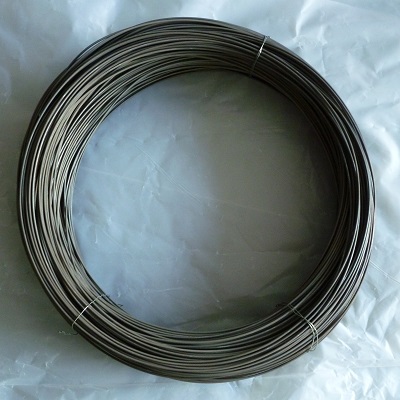FeCrAl (0Cr25Al5)
Key Features:
- FeCrAl Cr25Al5 has longer life and lighter weight than Nichrome
- High electric resistvity
- High maximum service temperature
- Best resistance to oxidation and corrosion in sulphur conditions
About FeCrAl (0Cr25Al5)
Iron-Chrome-Aluminum FeCrAl 0Cr25Al5 resistance heating alloy has high maximum service temperature in air up to 1250℃. Longer life permits large surface stress to be applied on the alloy. Lighter weight makes it a more economical resistance heating material than Nichrome. The electric resistivty remains almost constant with varying temperatures. Good yield strength and aging resistance. Outstanding form stability. Greater heat resistance than austenitic stainless steels therefore it is commonly used in the heating applications.
FeCrAl 0Cr25Al5 resistance heating alloy Applications
Infrared heaters, heating plates, irons, ceramic heaters & pots, fan heaters, quartz tube heaters, toasters, ovens, storage heaters, bead insulated coils, open coil components, hot air guns, convection heaters, radiators, industrial furnaces for heat processing, metal sheath tubular elements, suspended coil elements for air heaters
Heanjia Super-Metals manufactures resistance heating elements for the wide range of applications varying from industrial furnaces to domestic appliances.
Industrial Nomenclatures: UNS K92500, 1.4765
FeCrAl 0Cr25Al5 resistance heating alloy Chemical composition and characteristics
| Elements | |
| Chromium (Cr) | 23 to 26 % |
| Aluminum (Al) | 4.5 to 6.5 % |
| Iron (Fe) | Rem % |
| Properties | |
| Maximum operation temperature | 1250 ℃ |
| Electric resistivity | 1.42 X10-6 ohm.m at 20 ℃ |
| Density | 7.25 gram per cm3 |
| Thermal conductivity | 46.1 KJ/m.h.°C |
| Linear coefficient of thermal expansion | 16 x 10-6 per oC |
| Melting Point | 1500 oC |
| Tensile Strength | 630 to 780 Mpa |
| Elongation | Above 12 % |
| Reduction in area | 60 to 75 % |
| Hardness | 200 to 260 HB |
Forms Produced
| FeCrAl Wire | FeCrAl Wire Mesh | FeCrAl Heat Coil | FeCrAl Strip | FeCrAl Rod/Bar |
Heanjia Super Metals, America offers all above forms of FeCrAl Electric Resistance Heating alloy in all standard as well as custom specifications.


